Destination Viking
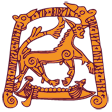
Destination Viking EU projekt
Destination Viking Association
Dan Carlsson Profesor på Högskolan, Gotland Drev sedan ett tag Viking Heritage. that was in
charge of the Council of Europe’s Viking route och framöver skulle våra project and together, we developed their newsletter into the Viking Heritage Magazine.
Bild Dan
Bild news letter & magasin
DESTINATION VIKING ASSOCIATION
Destination Viking is a concept for travel experience. Partners from a number of countries have come together to develop a
borderless tourism destination focusing on the Viking world.
Quality is a keyword for Destination Viking – as a visitor you expect quality at every level, and we will deliver it.
Quality means quality of activities, quality of presentations, quality of workmanship, quality of sites,
quality of food, quality of souvenirs, in short: quality experience!
Destination Viking has already involved partners both in the Scandinavian ‘home-lands’ of the Vikings in
the Nordic countries as well in a number of the lands in the west where Scandinavians settled (the Isle of Man,
Orkney and Shetland, Faeroe Islands, Iceland, Greenland and Newfoundland) and some of the
Baltic Sea areas with strong Scandinavian impact during Viking times (Germany, Poland, Estonia, Latvia and Russia).
The partnership is open to new partners and new countries.
Det huvudsakliga samarbetet mellan projekten och Högskolan was to improve public access physically
and mentally to the Viking heritage (measure 3.3 in the program - promotion of cultural tourism), and
the project improved signage at more than 50 sites, produced a number of leaflets and guides, and
also a book describing a number of important Viking sites around the North Sea.
Alla Destionation Viking projekten used the Viking Heritage Magazine as its newsletter.
EU PROJEKT
Fotevikens Museum med Region Skåne

1999 - 2002: Balder Interreg IIIB project, was aimed at the nations around the Baltic Sea and their interconnected history from the Viking Age to present.
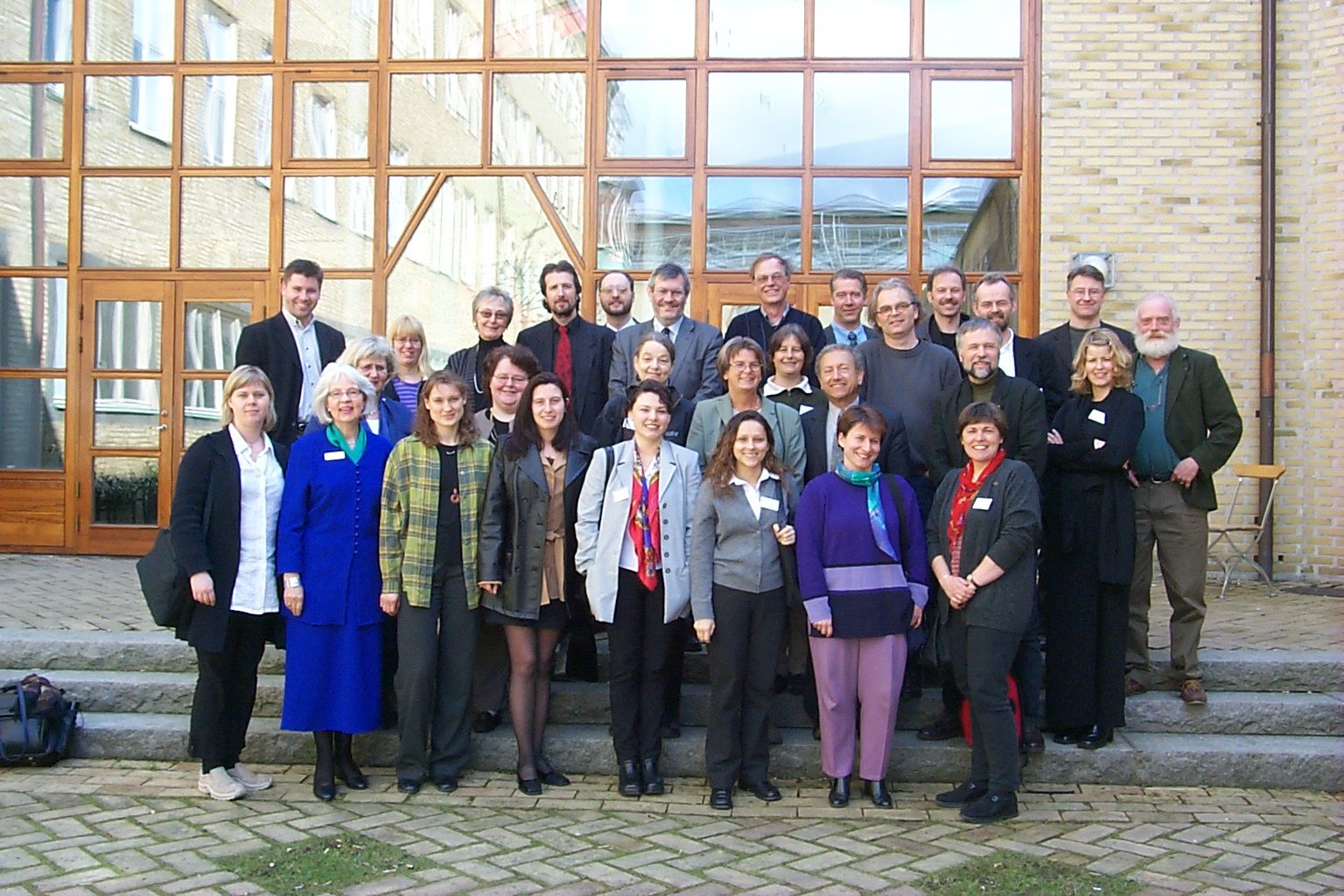
Vellinge kommun och Fotevikens Museum blev en partner EU projektet Balder som löpte under åren 2000-2003. An Interreg IIC Baltic Sea project.
2000 kunde stiftelsen genom dess internationella kontakter initiera och presentera för Vellinge kommun ett färdigt och godkänt koncept för ett stort EU-projekt. Kommunen åtog sig leadpartnerrollen. Detta Intreg III B-projekt handlade om länderna kring Östersjön och deras samhörande historia. Projektet, med namn Balder, påbörjade studierna av det kulturlandskap vi omger oss med. Tidsperioden var från vikingatid till nutid och de sju olika parterna hade tilldelats var sin tidsperiod och var sitt område. Stiftelsen ansvarade för den vikingatida perioden och för Skåneland. Förutom kulturhistoria ingick även natur- och marin arkeologiska koncept i projeketet.
Inom EU:s Östersjöprogram initierade stiftelsen ett stort EU projekt inom Interreg III B: Destination Viking Living History. Andra deltagare var Region Skåne som agerade Leadpartner och Vellinge kommun som innehade finance managment. Fotevikens Museum agerade Projektledare för Region Skånes räkning för hela projektet. Åtta partner från fyra länder deltog. Målet var att kartlägga respektive museums vikingatida närområde med därtill hörande källstudier och även med arbete ute i kulturlandskapet. En omfattande bok om Skåne och dess vikingatid producerades av Fotevikens Museum, baserat på ett mycket omfattande forskningsarbete inom museet. Boken ingick bl.a. i museets åtagande inom projektet. I projekt ingick också kartläggning av vikingatida lämningar kring de olika partnernas område. I arbetet ingick även framtagande av kvalitetskoncept kring så kallade Arkeologiska friluftsmuseer. http://www.destinationviking.com/www.destinationviking.com
2000 -2003 Balder
Samtidigt fick Vellinge kommun och Fotevikens Museum som en partner EU projektet Balder som löpte under åren 2000-2003.
An Interreg IIC Baltic Sea project.
Detta projekt handlade om länderna runt Östersjön och deras historia från vikingatid till nutid. I detta projekt blev
Geir Sör Reime observer liksom jag blivit observer i North Sea Viking Legacy (NSVL). Projektet handlade om
informational signs posted in nature was an important way of imparting information about the sites.
The project also created hiking trails to visualise the historical cultural landscape.
Möte foteviken - vellinge

möte bornholm
möte turko finland
möte Göteborg Balder & North sea leagasy
2001
Att söka partner till projekt
Detta första samarbete över gränserna blev upptakten till tjugo års gemensamt arbete med förmedling av historia och vikingatiden.
Vi smidde planer.
Inom EU:s Östersjöprogram initierades på detta sätt ett stort EU projekt inom programmet Interreg III B: Destination Viking Baltic Sea.
bild fotevik jans stenfell
Från Regionen Skåne fick Fotevikens museum bidrag
drag och tillsammans med
Geir gjorde vi en resa runt om i främst Skandinavien för att söka partners till framtida Eu projekt.
Region Skåne agerade här leadpartner och Vellinge kommun stod som finance managment.
Fotevikens Museum tog på sig rollen som projektledare för Region Skånes räkning för hela projektet.
2002- 2005 Första projektet i denna utvidgade grupp blev Destination viking Baltic Sea åren 2002- 2005.
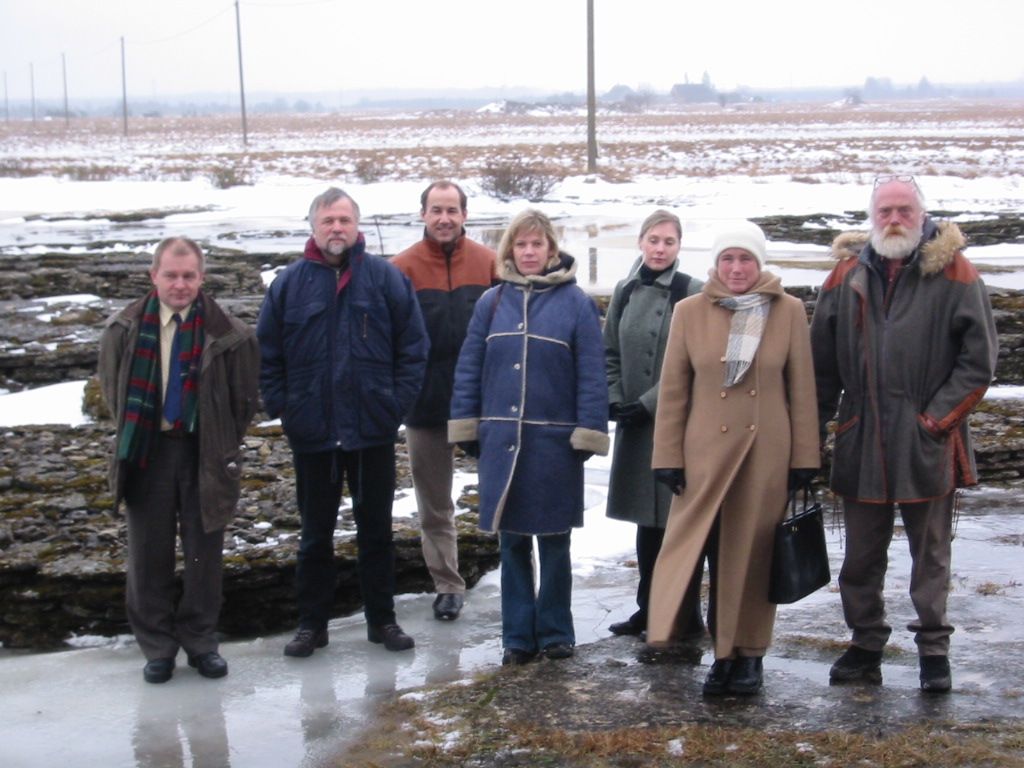
Dessa skulle främst vara kopplade till vikingakonceptet. På denna resa träffade vi
bland andra ”Rosala vikings” med Paula Wilson i spetsen.
Även etablerades kontakt med Lofotens museum genom Geir Are Johansen.
lofortnen geir are
Nu hade även arkeologen och museimannen Sven Rosborn kommit med som en kraftfull resurs i
projektarbetet och anställd på Fotevikens museum. Åtta partner från fyra länder deltog.
Målet var att kartlägga respektive museums vikingatida närområde med därtill hörande källstudier men
även inkludera arbete ute i kulturlandskapet. En omfattande bok om Skåne och dess vikingatid producerades
av Fotevikens Museum, baserat på ett mycket omfattande forskningsarbete inom museet.
Boken ingick bl.a. i museets åtagande inom projektet. I projekt ingick också kartläggning av
vikingatida lämningar kring de olika partnernas område. I arbetet ingick även framtagande av
kvalitetskoncept kring så kallade ”Arkeologiska friluftsmuseer”.
BILDER & UTVECKLA
Bland våra partners kan nämnas ”Gunnes gård” med Annakari, Sylvia och de andra damerna innan
Gun Bjurbergs kom med och tog ledningen där. ”Trelleborgen” i Danmark ingick i Slagelse museigrupp
där Ea Stevns Matzon var chef. ”Ukranenland” i Tyskland var också en part Med Wolfgang Schubert .
Bild gunnes gård trelleborgen dk
ukranenland avalsnäs Ale
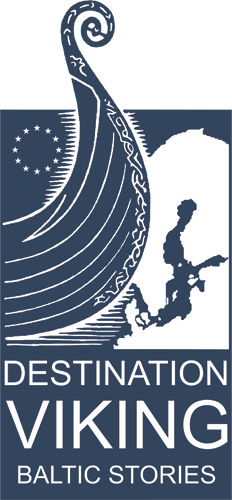
Destination Viking Living history
2002 - 2005: Destination Viking Living History, Interreg IIIB project, . Eight partners from four nations participated in mapping their museums’ Viking Age surroundings. Work was done both in studies of written sources and in the field.
Detta projekt handlade om länderna runt Östersjön och deras historia från vikingatid till nutid. I detta projekt blev Geir Sör Reime observer liksom jag blivit observer i North Sea Viking Legacy (NSVL). Projektet handlade om informational signs posted in nature was an important way of imparting information about the sites. The project also created hiking trails to visualise the historical cultural landscape.
Destination Viking Living history
Interreg IIIC Østersjø prosjekt 2002-05
14 partnere fra 7 land (Norske partnere:
Karmøy kommune og RKK i Rogaland)
Hovedvekt på levende historieformidling:
miljøet (bygninger osv.)
menneskene (holdinger, kostymer, utstyr, ferdigheter)
tilbudet til publikum
Har produsert
kvalitetsmanualer for rekonstruksjoner, kopier og formidling
Vikingløypa rundt Østersjøen – bok og mange lokale brosjyrer og lignende
Fortsetter som nettverk og vil bl.a. forsøke å arrangere vikingleirer for ungdom i 2006
Sven utveckla
Nu hade även arkeologen och museimannen Sven Rosborn kommit med som en kraftfull resurs i projektarbetet och anställd på Fotevikens museum. Åtta partner från fyra länder deltog. Målet var att kartlägga respektive museums vikingatida närområde med därtill hörande källstudier men även inkludera arbete ute i kulturlandskapet. En omfattande bok om Skåne och dess vikingatid producerades av Fotevikens Museum, baserat på ett mycket omfattande forskningsarbete inom museet. Boken ingick bl.a. i museets åtagande inom projektet. I projekt ingick också kartläggning av vikingatida lämningar kring de olika partnernas område. I arbetet ingick även framtagande av kvalitetskoncept kring så kallade ”Arkeologiska friluftsmuseer”.
Bland våra partners kan nämnas ”Gunnes gård” med Annakari, och de andra damerna innan Gun Bjurbergs kom med och tog ledningen där. ”Trelleborgen” i Danmark ingick i Slagelse museigrupp där Ea Stevns Matzon var chef. ”Ukranenland” i Tyskland var också en part Med Wolfgang Schubert .
Första projektet i denna utvidgade grupp blev Destination viking Baltic Sea åren 2002- 2005. Inom EU:s Östersjöprogram initierades på detta sätt ett stort EU projekt inom programmet Interreg III B: Destination Viking Baltic Sea. Region Skåne agerade här leadpartner och Vellinge kommun stod som finance managment. Fotevikens Museum tog på sig rollen som projektledare för Region Skånes räkning för hela projektet.

Studieresor
sven / Geir fyll på
Roskilde museum
Gotland
ukranenland tysskland
Gotland Dan Carlsson
Västra Görtaland
Efter en projektresa till Island skapades Islands första EU projekt, Destination Viking Saga Land 2003-2006, vilket var initierat i samverkan med Fotevikens museum med projektmedel från bl.a. Region Skåne och i samverkan med Rogaland Fylkeskommuns kultursektor i Norge. The project was about studies of Viking Age monuments and older tales and sagas of the Nordic periphery. Projektet innebar nätverksuppbyggande runt omkring i Skandinavien och det lade grunden till ett Interreg III B projekt för norra periferin. Här ingick Nordnorge, Island, Grönland, Färöarna, Orkneyöarna, Shetland samt New Foundland. Representanter från Fotevikens Museum samt Rogalands Fylkes kommun agerade konsulter och vetenskapliga garanter. Projektet innefattade studier av kulturlandskapet och integrering av vikingatida lämningar i ett övergripande förmedlingskoncept. Studier av äldre sagor och sägner var också en huvudpunkt. Det var därför naturligt att Island skulle bli leadpartner och Rögnvaldur Gudmunsen påtog sig rollen som projektledare. Ministeriet på Island var direkt involverat.

Med Rögnvaldur i spetsen utvecklades så ”Icelandic Saga & Heritage Association” (http://www.sagatrail.is) Med i gruppen kom så även ”Shetland Amenity Trust” med Val Turner och David Cooper som deltagare och redan då fanns Jimmy Moncrieff med i bakgrunden.
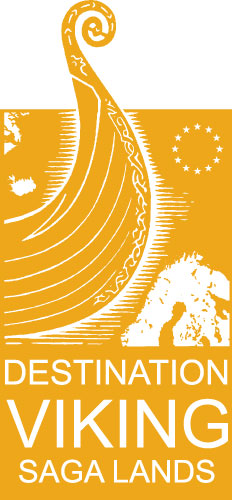
Destination Viking Sagaland
2002 - 2006: Destination Viking Saga Land, Interreg IIIB project, , for Nordic Periferi as a consultant. The project was aimed at the study of the cultural landscape and the integration of Viking remnants. The study of ancient stories and legends was a main focus of the project.
Interreg IIIC Nordlig periferi prosjekt med utgangspunkt i observatørdeltakelse i North Sea Viking Legacy
Prosjektperiode 2002-2005
Arbeider for forlengelse ut 2006, med tanke på nytt hovedprosjekt fra 2007
Sagaland prosjektet har 16 partnere fra 6 land (Norske partnere: Borg, Trondenes, Avaldsnes(finansiert gjennom NORA))
Nye partnere har kommet til hele tida (deltar som observatører)
Har bl.a produsert/arrangert
Sagalandrute - Sagaland bok og Sagaland kart
Flere populariseringer av sagaer
Lokale sagaruter med skilting etc.
Historieforteller-arrangement, seminar
Formidlingsseminar
Interreg IIIC Nordlig periferi prosjekt med utgangspunkt i observatørdeltakelse i North Sea Viking Legacy
Prosjektperiode 2002-2005
Arbeider for forlengelse ut 2006, med tanke på nytt hovedprosjekt fra 2007
Sagaland prosjektet har 16 partnere fra 6 land (Norske partnere: Borg, Trondenes, Avaldsnes(finansiert gjennom NORA))
Nye partnere har kommet til hele tida (deltar som observatører)
Har bl.a produsert/arrangert
Sagalandrute - Sagaland bok og Sagaland kart
Flere populariseringer av sagaer
Lokale sagaruter med skilting etc.
Historieforteller-arrangement, seminar
Formidlingsseminar
Ansökningsmöte i Foteviken
Island
Grönland
Grönland
grönland
färöarna
färöarna
var
var
höga kusten Sverige
Blue lagunen Island
fast i snön
var
bilder tingvalla geise etc
LOGGAN WATERLAND
Nästa samarbetesregion var Nordsjöområdet och Västeuropa. I Västeuropa gjordes här en ansökan Destination Viking Waterland med bl.a. entusiasten och holländaren Jan Stobbe. I den projektansökan vi gjorde för detta området ingick parter från Holland, Belgien, UK med flera. Tyvärr föll detta projekt på målsnöret vid EU:s bedömning.
2013: Vikingarna kommer
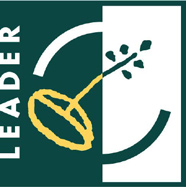
Lokalt i Öresundsregionenvia Leader och Öresunds Eventcenter med Wonderfull Copenhagen etc. lyckas Fotevikens museum tillsammans med Trelleborgen i Danmark skapa två projekt som samlade Vikingaanläggningarna på båda sidor Öresundet . Det Blev Viking Games och Vikingarna kommer. Här fick vi med på Svenska sidan Vikingatider och Trelleborgen i Trelleborg och på Den danska sidan även Fredriksund Vikingaspill. Fredriksund hade också intressant koppling då de medverkat i flera år i Catoria, Vår medlem i norra Spanien
Nämn ordet vikingar utomlands och troligtvis tror sig många veta att det har med norra Europa att göra. I varje fall vet innevånare i andra länder att vissa utländska fotbollsfans är iklädda märkliga huvudbonader med horn när de hejar på något nordiska landslag.
Begreppet ”Viking” är helt klart något som är säljbart. Samtidigt är det ett begrepp som vi här i Sverige inte har lyft fram i den frontlinje där den bör ligga när det t.ex. gäller marknadsföringsinsatser gentemot inkommande turister. Turismen är Sveriges i särklass stora industrigren och den kommer att växa lavinartat åren framöver.
Utifrån detta vill vi inom ramen för Leader Söderslätt i samverkan med alla goda och initiativrika krafter på Söderslätt, aktivt arbeta med att lyfta fram vårt äldre kulturarv, då speciellt vikingabegreppet, på ett aptitretade, innehållsrikt, spännande och informativt sätt. Bara i sydvästra Skåne har vi mycket att visa fram. Här finns tre stora anläggningar; Uppåkra med sin världsunika ”Järnåldersstad och tempel”, Trelleborgs museum med sin vikingaborg ”Trelleborgen” och Fotevikens Museum med sin ”Vikingastad”. Dessutom finns i sydvästra Skåne ett flertal spännande lämningar från vikingatiden.
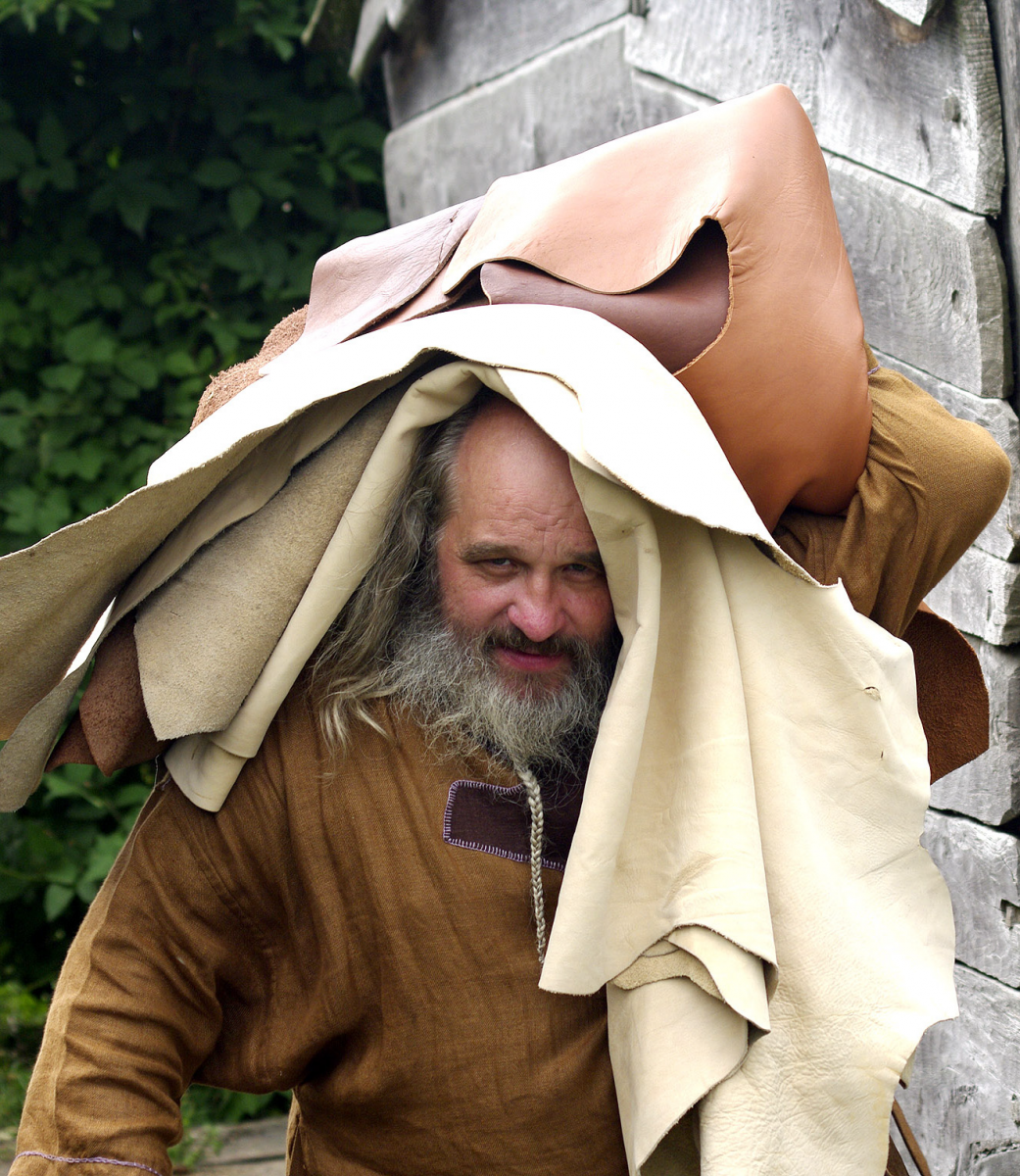
Under snart tjugo år har Fotevikens Museum hållit en internationell vikingamarknad veckan direkt efter midsommar. Vikingaborgen Trelleborgen i Trelleborg har sedan flera år också haft sin vikingamarknad veckan efter Fotevikens Museum. Dessa evenemang drar tusentals besökare till det syvästra hörnet av Skåne varje år.
Men … tillsammans i en större gruppering kan vi dra betydligt många fler besökare – och även torgföra hela Söderslätt under dessa årligen återkommande veckor. Vi tror att det finns många intressenter med många idéer som kan utveckla detta koncept till något verkligt stort för hela Söderslätt.
Inom ramen för Leaderprogrammet vill vi därför göra ett kraftfullt försök att genom att nyttja begreppet ”Viking” sätta hela Söderslätt på evenemangskartan. Detta sker genom att involvera föreningar, organisationer, butiker och näringsidkare att nyttja tillfället. Gotlandsborna har lyckats att göra ”Medeltidsveckan i Visby” till en stor publikmagnet. Tillsammans kan vi utan tvekan göra samma sak på Söderslätt.
Vikingabegreppet är internationellt ett oerhört starkt varumärke. Nu har även Kultur Skåne och Wonderful Copenhagen
insett detta faktum. ”Viking” har blivit ett av de turistiska huvudmål som man är beredd att satsa på. Man har skapat Öresund Event som, förutom sportsevenemang också svarar för kulturevent och här med siktet inställt på ”Viking”.
Målet är att knyta samman området runt Öresund under detta begrepp och göra detta till ett vikingaområde väl värt att besöka. Huvudparten i detta arbete görs i samverkan mellan museerna Fotevikens museum, Trelleborgs museum med Trelleborgen, Fredrikssunds vikingaskepp samt Trellborgens museum i Slagelse i Danmark. Här kommer man att under sommaren hålla stora turistevenemang.
Här finns alltså plötsligt en unik möjlighet att utveckla ett helt nytt koncept som kan komma hela närområdet till gagn. Hur gör vi detta på bästa sätt? Givetvis genom att de som är nyfikna på idén träffas, pratar, skapar nätverk och utvecklar spännande och säljande produkter.
Follow the Vikings
https://www.followthevikings.com/
hemsida
Geir beskriv
Nu fortsatte också ett antal hektiska år med olika projekt som avlöste varandra. Geir och Björn var mycket proaktiva med det nätverk som blev allt större då nya samarbetspartner inträdde. I samma tak bildas den ena organisationen efter varandra ute i Europa.
EU projects that The Museum of Foteviken has participated or are participating in:
2011 - 2011, Söderslätt museum network, a leader pilote project, to bring togeter the museums at Söderslätt.
2015-2019 FOLLOW THE VIKINGS Creativ Europe The Follow the Vikings project is a multi-faceted project to promote, celebrate, transfer knowledge and skills and facilitate the exchange of tangible and intangible cultural material relating to the Viking World. It presents a tremendous opportunity to add value to and build on the Council of Europe’s Viking Cultural Route,
Viking Vision
Viking Vision ett projekt som vi väntar svar på - det blev Follow the vikings 2015
Ama prof
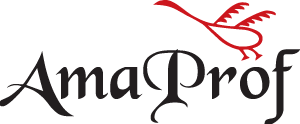
2010 – 2012: AMAPROOF, Interreg IVA project. It is a cross-border project aimed at strengthen the cooperation between The Museum of Foteviken and Middelaldercentret in Denmark in their work with volunteers. The employees of the museums participate together with volunteers.
Gränsöverskridande volontärverksamhet på Archaeological Open Air Museums.
Projektets mål är att öka den gränsöverskridande vardagsintegriteten för volontärer genom att öka deras möjlighet till mobilitet och anställningsbarhet inom AOAM (Archaeological Open Air Museums) i Öresundsområdet. Ett delmål är att utveckla volontärverksamheterna för att skapa mervärde för AOAM och öka kvaliteten. Genom utbyte mellan Fotevikens museum i Sverige och Middelaldercentret i Danmark av kunskap, gemensam forskning, personal och volontärer tas rutiner, utbildningsmaterial och handledarmaterial för volontärer fram. Då parterna båda tillhör Öresundsområdet, kommer samarbetet dem emellan att leda till ett grundläggande kunskapshöjande i vikingatid och medeltid i Öresundsområdet.
Projektorganisationen
Lead Partner: Fotevikens museum
Projektkoordinator: Sandra Enoksson
Ekonomiansvarig: Anette Ahlrot
Projektansvarig: Björn M. Buttler Jakobsen
Partners:
Middelaldercentret:
Partnerkoordinator: Pia Bach
Partnerleder: Peter Vemming
Ökonomiansvarlig: Martin Sönderskov
Fotevikens museum:
Partnerkoordinator: Sandra Enoksson
Partnerledare: Björn M. Buttler Jakobsen
Ekonomiansvarig: Anette Ahlrot
Ansvarsområden:
Hemsidor: Sandra Enoksson
Facebook-sidan: Sandra Enoksson och Pia Bach
Youtube-kanal och film: Peter Vemming Hansen
Text och foto: Sven Rosborn
Kurser och seminarier: Pia Bach
Volontärutbyten: Sandra Enoksson och Jackie Wahrgren
Information och kommunikation: Sandra Enoksson
Administration: Sandra Enoksson
Vikingarna kommer - 2013
Hands on
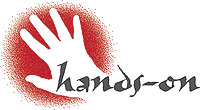
2010- 2012 Hands on, a leader project , involving local people to get involve in old handcraft and experimental archaeology
Experimentell hantverksverksamhet i Söderslätt
Hantverk Hands On - Tillgängliggörande av experimentell arkeologi i Söderslätt
Förmedling av experimentell arkeologi
Fotevikens museum har under snart 15 år byggt upp en verksamhet och en anläggning bestående av en vikingatida stad med omkring 25 hus och uppbyggda miljöer. Till detta finns en serviceanläggning med entré, turistinformation, historisk butik, utställning, café och toaletter.
Museets verksamhet har till stor del bestått av att genom första och tredje person förmedla historia och arkeologi till besökande grupper och enskilda personer. Till detta hör en omfattande skolverksamhet.
I de historiska miljöerna guidas man runt, går på egen upptäcktsfärd, ser, känner och luktar. Man kan även möta hantverkare i vikingahusen.
Intresset för s.k. hands on-verksamhet är något som vi upplever har ökat mycket kraftigt under de senast tio åren. En lösning behövs för att kunna möta detta behov utan att bemanna samtliga husen med fler hantverkare (vilket skulle innebära en allt för stor personalskara). Att finna hantverkskunniga personer, som även på ett pedagogiskt sätt skall förmedla historia och dessutom allt oftare på ett främmande språk, är dessutom mycket svårt.
Museet har en stor upptagning, både vad gäller skola och inkommande turister. Hands on verksamhet kommer att ge dessa grupper ytterligare dimensioner till sitt besök. Men framförallt är det lokalbefolkningen som vi vill ska bli erbjuden ökad kompetensmöjlighet och intresse för historiskt hantverk, och medverkan i aktiviteterna kring detta. Detta ska ses som ett komplement till det beviljade EU-projetektet AMAPROF som utvecklar volontärverksamhet. I det projektet är dock inte hands on stationernas uppbyggnad en del.
Historisk verkstad för hands on förmedling
I anslutning till entré- butiksområdet planeras uppbyggnad av en historisk verkstad. Här finns bivacker, vindskjul och andra icke historiska men ej med modernt material uppbyggda skydd mot vind och väder samt som tak över huvudet.
Till detta byggs det upp ett antal stationer för hantverk så som smidesverkstad, keramikverkstad med ugnar, färgning och hantering av ull och lin, matlagning med eldstäder och gropar för kokning av mat i grop. Garveri, täljbänkar och svarvar, borrar för hantering av trä. Lekplats för at prova på vikingatida lekar.

2012-2014 CRAFTLAND Interreg IV A South Baltic. The main aim of the project is to intensify intercultural dialogue and involve local communities in cross-border activities as well as preserve the cultural heritage of the South Baltic Region through joint actions increasing the attractiveness of the area.
Craftland: Medeltidsmarknad och äldre hantverk på Fotevikens Museum
År 2012 hölls en stor medeltidsmarknad på Fotevikens Museum; ett unikt tillfälle att återuppleva den marknad som under mer än trehundra år hölls i området under medeltiden.
Ladda ner Craftland-foldern [PDF, 13 MB]
| Attachment | Size |
|---|---|
| 2.03 MB | |
| 1.8 MB | |
| 1.03 MB | |
| 2.08 MB |
DETTA STYCKE FINNS MED MEN SKALL ANPASAS TILL EUPROJEKTEN . DE finns uppdelat på organsiationer .
Destination Viking skall bli organisation
Det är också nu som det första försöket görs att organisera Destination viking projekten till en enhetlig europeisk organisation. Resan gick till Island of Mann. Med på resan var Dan Carlson, professor från Gotland som arbetat med Viking heritage projekt via högskolan på Gotland. Han var den som på 1980-talet initierade Viking Culture route i programkonceptet Europén culture routes och även stått bakom boken ”Follow the vikings”. I ressällskapet fanns också Rögnvaldur från ”Sagalands association”, vår holländske vän Jan Stoben och han som var med på försöket med ”Destination Viking water land” samt Steven Harrisson som då var Kultur och museichef på Isle of Mann. Den grundläggande idén som vi hade var att vi i stiftelse- eller bolagsform skulle driva ”Destination Viking association” som organisation för vikingatida verksamheter och besöksmål med basen på Isle of Mann. Försöket lyckades nästan.

Partners och andra influenser i utvecklingen
Under tiden med arbetet i alla dessa EU-projekt skapade vi olika partners men också värdefulla kontakter runt om i Europa. Här är några av dessa.
skall även kopplas till DVA utveckling
”Institutet för forntida teknik” 1980
An important event for the Swedish experimental archaeology was when the ”Institutet för forntida teknik” (Institute of ancient technique) with was founded in 1980 in Östersund in Sweden. The initiator and enthusiast behind the project was Thomas Johansson and the activity was integrated into the Bäckedal people's college. Under his leadership the institute was developed into the the leading Swedish institution within its subject area. The institute worked not only with archaeology but also related disciplines of science, like nature science, anthropology and older crafts.
NSLF- Nätverk Sveriges levande forntid 1999
On the 26th of October 1999 all representatives of all ancient villages and experimental archaeology in Sweden gathered in Ås. Thomas Johansson and Harriet Löwenheim thus initiated the creation of the organisation Nätverket Sveriges Levande Forntid (NSLF).
Föreningen NSLF bildades och utvecklades på ett ytterst kreativt och framgångsrikt sätt. Nätverket gjorde hela Sverige starkare när det gällde att verka för levande historia. Både kvalitet och ämneskunskap ökade men tyvärr dog en av eldsjälarna, Thomas Johansson, sommaren 2003. Institutet under hans ledning var då en av parterna i ”Sagalandsprojektet”. ”Gene forntidsby” i Örnsköldsvik i Sverige med Agne och Maria Säterberg fick då ta över partnerskapet i Destination Viking Saga Land 2003-2006 samtidigt somordföranderollen i föreningen NSLF togs över av Björn. A lot of work was put into increasing quality and knowledge among the roughly 40 members of the organisation. Många av dessa medlemmar blev också partner i de två nästkommande EU projekten på temat vikingar.
NOOAM - the Nordic Organisation of Open Air Museums 2007
In 2007 another step was taken toward a broader approach with the remake of the association organisation Nätverket Sveriges Levande Forntid (NSLF), into the Nordic Organisation of Open Air Museums, NOOAM. www.nooam.se
Destination Viking Associations
En interimstyrelse till denna organisation bildades 25.3 2007 under en långfärd buss med olika nordiska representanter. Det hela skedde efter ett årsmöte där organisationen NSLF hade övergått till den nya organisationen NOOAM. På väg hem till Foteviken blev vi i en fullsatt minibuss plötsligt väldigt kreativa och bildade då föreningen Destination Viking Association. I interimstyrelsen invaldes deltagarna i bussen, nämligen Geir Sör Reime, som valdes som interimstyrelse ordförande, Björn M Buttler Jakobsen som vice interim chariman, Mikael Härdig som interim sekreterare Helga Agustdottir från Island Sagaland som interim kassör. Till övriga interimsledamöter valdes enhälligt övriga i vikingatiden erfarna bussresenärer: Sven Rosborn och Susanne Buttler, båda från Fotevikens Museum samt Igrun Ragnarsdottier från Island.
På våren 2008 hölls ett nätverksmöte för NOOAM på ”Gunne gård” i Stockholm, Sverige. På mötet fanns representanter för hela Skandinavien. Vid detta tillfälle godkändes stadgarna för Destionation viking Associations och verksamheten drog i gång.
In November 2008, the Destination Viking Association was formed in Haugesund Norway. It has formally taken over the results and products of the three Viking projects. In parallel with this, an Interreg IVC Northern Periphery project called THING Project was approved, and upon its completion, the Destination Viking Association took over the results and products of this project too.
Jimmy Moncrieff ordförande
Björn M Buttler Jakobsen, vice ordförande
Paula Wilson, sekreterare,
Gun Bjursberg, kassör
Rögnvaldur Gudmusson, ledamot
Geir Sör Reime, ledamot.
Professor Dan Carlsson blev hedersledamot.
Så var vi då igång. Valet av Jimmy Moncrieff var en viktig länk i DVAs framtida succés. Det viktigt med Shetland Amenity Trust i ryggen skulle vi få en person som ordförande med rätta ekonomiska möjligheter och muskler att stå bakom organisationen. Då skulle vi också ha en del av finansieringen på plats.
På ett möte På Fotevikens Museum den 9 juni 2008 på ett styrelsemöte med Björn Geir , Paula, Geir och Jimmy var så Organsiationen i full sving
Nu hoppades vi att vi hade de muskler och resurser som behövdes för att sätta DVA på kartan.
O vi utvecklades. Allt fler organisationer slöt upp bakom DVA och det blev allt mer spännande att titta in i framtiden.
Under den period när det svenska nätverket Nätverket Sveriges Levande Forntid (NSLF),hade startat initierade Tomas Johansson även bildandet av EXARC 2001, en europeisk motsvarighet till det svenska nätverket. At the founding of the Swedish network the goal was to develop the Swedish concept into an international concept. Thomas Johansson had this thought when he established a close collaboration with Martin Schmidt who was then head of the classic "Archäologisches Freilichtmuseum” in Oerlinghausen, Germany, and the Dutch archaeology student Roeland Paardekooper. När detta nätverk så gick in i föreningsform efter ett möte i Lejre I Danmark våren 2003 blev Björn här invald som vice ordförande och när sedan Thomas tragiskt gått bort endast en kort tid därefter fick Björn ta över ordförandeposten vid årsmöte i Foteviken 2005. Det var under mötet i Lejre som Björn också presenterat möjligheten för EU projekt för fortsatt utveckling av EXARC. Härigenom skulle vi kunde arbeta vidare med kvalitetsutveckling av inte bara vikingaanläggningar utan även med anläggningar runt omkring i Europa som visade andra tidsepoker. I detta arbete skulle frågor rörande förmedling och experimentell arkeologi spela en stor roll. På Björns förslag invaldes Geir Sör Reime med sitt stora internationella kontaktnät i EXARCS styrelse.
Till EXARC parallella EU projekt
Utom engagemanget i EXARC arbetade Geir och Björn med andra närstående projekt. Många organisationer och grupper ville nämligen ha deras erfarenheter med sig i sina projekt. Detta resulterade i bland annat två stora och mycket framgångsrika EU projekt, LiveArch 2006 – 2009 och OpenArch 2011-2015. Flera av Destination Viking Associations ursprungsmedlemmar (men många nya) kom med i detta arbete.
Engelska texter som vi senar gör en engel sida på
It all started with two people – two projects in the year 1999
As I remember it, it began during the spring of 1999 with an e-mail from Geir Sör Reime from Stavanger in Norway, working for the Rogaland county municipality. Nice, I thought, my own background being from Stavanger in Norway, so I responded immediately. At the time Geir was running a newly started EU project for the Rogaland county municipality, North Sea Viking Legacy, and he wished to have a collaboration between our countries.
The North Sea Viking Legacy project was approved by the Interreg IIC North Sea program in January 1999, including 20 partners from Norway, Denmark, Sweden and the United Kingdom (Shetland and Norfolk), with associate partners from the Isle of Man, Iceland and southern Sweden.
At the project meetings Avaldsnes on Karmøy also showed up for the first time. Additional project participants included Marit Synnøve Vea and Rögnvaldur Gudmundsson from Iceland, Jan Lindh from Midgard in Borre/Tönsberg and Bjarne Clements from Ribe Viking Centre in Denmark.
At the time the Foteviken Viking Museum were already involved in our first EU project 1998-1999, Öresund now and then, in collaboration with the Roskilde Museum in Denmark.
We, Geir and Björn decided to meet up, which was done following an EU conference in Finland.
At the same time, Vellinge municipality and Foteviken Viking Museum partnered in up the EU project Balder, an Interreg IIC Baltic Sea project, which ran from 2000 to 2003.
This project was about the countries surrounding the Baltic Sea and their history from the Viking Age to the present day. Geir Sör Reime became an observer in this project, like I had become an observer in the North Sea Viking Legacy (NSVL) project. The project concerned informational signs posted in nature as an important way of imparting information about the sites. The project also created hiking trails to visualise the historical cultural landscape.
Dan Carlsson, professor at the University College of Gotland, was running Viking Heritage, which was in charge of managing the Council of Europe's Viking route, and in the coming time our projects would work together, and we developed their newsletter into the Viking Heritage Magazine.
The main focus of the collaboration between the projects and the university college was to improve public access, both physically and mental, to the Viking heritage (measure 3.3 in the program – promotion of cultural tourism). The project improved signs at more than 50 sites, produced a number of leaflets and guides, along with a book describing a number of important Viking sites around the North Sea.
All the Destination Viking projects used the Viking Heritage Magazine as their newsletter.
In 2012, the responsibility for managing the Council of Europe's Viking Route was transferred to the Destination Viking Association, and the association later had a successful re-accreditation by the Council of Europe in 2015. Jimmy Moncrieff laid the foundation for much of this work.
Step 2 – new projects
This first cross-border collaboration lead to 20 years of collaboration around history education and the Viking Age. We made plans. Foteviken Viking Museum received grants from the Region Scania council, and along with Geir, I embarked on a journey, mostly around Scandinavia, looking for future partners for upcoming EU projects tied to the Viking concept. On thir journey we met, among others, Rosala Vikings, headed by Paula Wilson, and established contact with the Lofotr Viking Museum through Geir Are Johansen.
The first project with this expanded group became the Destination Viking Baltic Sea, between 2002-2005. Within the EU Baltric Sea program, a large EU project was initiated within the programme Interreg III B: Destination Viking Baltic Sea. The Region Scania council acted as lead partner and Vellinge municipality managed the finances. Foteviken Viking Museum assumed the role of project leader on behalf of Region Scania.
At this time the archaeologist and museum veteran Sven Rosborn had joined as a powerful resource in the project work, and employee at Foteviken Viking Museum. Eight partners from four countries took part. The goal was to chart the Viking Age history of the local area around each museum, including source material studies and field work. An extensive book about Scania during the Viking Age was produced by Foteviken Viking Museum, based on extensive research work within the museum. The book was part of the project commitments of the museum. The project also included charting Viking Age remains and relics in the area around each partner, and development of a quality concept concerning so called Archaeological Open Air Museums.
Gunnes Gård was included among the partners with Anna-Cari and other staff before Gun Bjurberg joined and took the lead there. Trelleborgen in Denmark was part of the Slagelse museum group, lead by Ea Stevns Matzon. Ukranenland in Germany was also a partner, headed by Wolfgang Schubert.
Following a project trip to Iceland, the first Icelandic EU project was created: Destination Viking Saga Land, in 2003-2006. The project involved Foteviken Viking Museum with project grants from Region Scania, and the culture sector of Rogaland County Municipality in Norway. The project was about studies of Viking Age monuments and older tales and sagas of the Nordic periphery.
The project involved networking around Scandinavia, and laid the foundation for an Interreg III B project about the northern periphery. This involved northern Norway and Sweden, Iceland, Greenland, the Faroes, the Orkney Islands, Shetland and New Foundland. Representatives from Foteviken Viking Museum and Rogaland county municipality acted as consultants and scientific advisors. The project contained studies of the cultural landscape and integration of Viking Age remains in an overarching educational concept. Studies of old sagas and legends was another focal point. Thus it was natural for Iceland to assume the role of lead partner, with Rögnvaldur Gudmundsson as project leader. The ministry on Iceland was directly involved.
With Rögnvaldur in at lead the Icelandic Saga & Heritage Association was developed. (http://www.sagatrail.is). The Shetland Amenity Trust joined the group, with Val Turner and David Cooper as participants, and back then Jimmy Moncrieff was already in the background.
The next region for cooperation was the North Sea area and western Europe. We applied for the project Destination Viking Waterland, with the dutch enthusiast Jan Stobbe among others. In the project application was included partners from Holland, Belgium, the United Kingdom and others. Sadly the project stumbled at the finishing line and was rejected by the EU assessment.
At the same time we involved the network in several other EU projects around Europe, and not just tied to the Viking Age. This included projects like KNOT 2002-2006 (culture, nature and tourism). This project was about finding solutions for a digital map accessible online where people could search for knowledge and discover interesting places to visit. Exchange of experience was a large part of the project as all participants had been lead partners of their own prior projects. Geir wrote this application, and was also the project manager.
A few hectic years followed with several projects following each other. Geir and Björn were very active with the network that grew ever larger with new partners joining. Several organisations were founded across Europe.
Destination Viking is to become an organisation
At this time the first attempt is made or organise the Destination Viking projects into a uniform European organisation.The trip goes to the Isle of Man, with Dan Carlsson, professor at the university college of Gotland, who had worked with Viking Heritage projects. He was the founder of the Viking Cultural Route during the 1980s in the program concept European Culture Routes, and was behind the book Follow the Vikings. Along the trip was also Rögnvaldur from Sagalands association, our Dutch friend Jan Stobbe who we worked with during the Destination Viking Water Land attempt, and Steven Harrisson, who was culture and museum manager at the Isle of Man. The basic idea we had was to run Destination Viking Association as a foundation or company, as an organisation for Viking Age activities or attractions, based on the Isle of Man. The attempt almost succeeded.
Partners and other influences during development
During the time working with all these EU projects we made various partners, but also valuable contacts across Europe. Some of those include:
The Institute of ancient techniques 1980
An important event for Swedish experimental archaeology was when the Institute of ancient techniques was founded in 1980 in Östersund, Sweden. The initiator and enthusiast behind the project was Thomas Johansson and the activity was integrated into the Bäckedal people's college. Under his leadership the institute was developed into the the leading Swedish institution within its subject area. The institute worked not only with archaeology but also related disciplines of science, like nature science, anthropology and older crafts.
NSLF- The network Swedish Living Antiquity 1999
On the 26th of October 1999 all representatives of all ancient villages and experimental archaeology in Sweden gathered in Ås. Thomas Johansson and Harriet Löwenheim thus initiated the creation of the organisation Nätverket Sveriges Levande Forntid (NSLF). The association NSLF was founded and developed in a very creative and successful way. The network strengthened Sweden when it came to living history. Both the quality and knowledge increased, but sadly one of the driving forces behind it, Thomas Johansson, died in the summer of 2003. The institute under his leadership was one of the partners of the Sagaland project. The Gene ancient village in Örnsköldsvik, Sweden, with Agne and Maria Säterberg took over the partnership in Destination Viking Saga Land 2003-2006, while the role of chairman in NSLF was taken over by Björn. . A lot of work was put into increasing quality and knowledge among the roughly 40 members of the organisation. Many of these members also became partners in the following two EU projects with the Viking theme.
NOOAM - the Nordic Organisation of Open Air Museums 2007
In 2007 another step was taken toward a broader approach with the remake of the association Nätverket Sveriges Levande Forntid (NSLF), into the Nordic Organisation of Open Air Museums, NOOAM. (formerly www.nooam.se)
Destination Viking Association
An interim board for this association was founded in march 25, 2007 during a long bus trip with several Nordic representatives. It happened following an annual meeting where the organisation NSLF had been transformed into the new organisation NOOAM. On the way back to Foteviken in a full minibus, we suddenly became very creative and formed the Destination Viking Association. The people in the bus were chosen as interim board members: Geir Sör Reime, chosen as interim chairman; Björn M Buttler Jakobsen, chosen as interim vice chairman; Mikael Härdig as interim secretary; Helga Augustdottir from Iceland Sagaland as interim treasurer. As other interim members, the other people in the bus knowledgeable of the Viking Age were unanimously chosen: Sven Rosborn and Susanne Buttler, both from Foteviken Viking Museum, and Igrun Ragnarsdottir from Iceland.
In the spring of 2008 a network meeting for NOOAM was held at Gunnes Gård in Stockholm, Sweden. Present at the meeting were representatives from across Scandinavia. At this meeting the statutes of the Destination Viking Association were approved, and the work started.
In November 2008, the Destination Viking Association was formed in Haugesund Norway. It has formally taken over the results and products of the three Viking projects. In parallel with this, an Interreg IVC Northern Periphery project called THING Project was approved, and upon its completion, the Destination Viking Association took over the results and products of this project too.
Jimmy Moncrieff, chairman
Björn M Buttler Jakobsen, vice chairman
Paula Wilson, secretary
Gun Bjursberg, treasurer
Rögnvaldur Gudmusson, member
Geir Sör Reime, member
Professor Dan Carlsson became an honorary member.
Then we were up and running. The Choice of Jimmy Moncrieff as an important link for the future success of the DVA. It was important that, backed by the Shetland Amenity Trust, we would get a chairman with the proper economic abilities and muscle behind the organisation. We would also have part of the funding in place.
A board meeting was held at Foteviken Viking Museum on the 9th of June 2008, with Björn, Geir, Paula and Jimmy present, and with that the association was fully operational. We hoped to now have the muscle and resources needed to put DVA on the map. And we evolved, more organisations joined up behind DVA and the future seemed all the more exciting.
During the time when the Swedish NSLF network was started, Tomas Johansson also initiated the founding of EXARC in 2001, a European counterpart to the Swedish network.
At the founding of the Swedish network the goal was to develop the Swedish concept into an international concept. Thomas Johansson had this thought when he established a close collaboration with Martin Schmidt who was then head of the classic "Archäologisches Freilichtmuseum” in Oerlinghausen, Germany, and the Dutch archaeology student Roeland Paardekooper.
When this network became an association following a meeting in Lejre, Denmark in the spring of 2003, Björn was chosen as vice chairman, and shortly thereafter assumed the chairman role at the 2005 annual meeting in Foteviken, following Thomas' tragic death.
It was during the meeting in Lejre that Björn presented the possibility of EU projects as a way of future development for EXARC. Thus we would be able to continue working for quality assurance of not just Viking Age facilities, but also facilities across Europe working with different time periods. Questions concerning teaching and experimental archaeology would play a large role in this work. At Björns suggestion, Geir Sör Reime, with his large knowledge of write EU applications, was chosen to join the EXARC board.
EU projects in parallel with EXARC
Aside from their involvement in EXARC, Björn and Geir worked on other similar projects. Many groups and organisations sought their experience for their own projects. This resulted in, among others, two very large and successful EU projects, LiveArch 2006-2009, and OpenArch 2011-2015. Several of the original Destination Viking Association members, and many new ones, joined in this work.
LiveARCH was: a network of archaeological open air museums. It is a part of the conceptual development of ICOM (International Council of Museums). Here EXARC, (then lead by Björn M Jakobsen, Geir Sör Reime and the enthusiast Roeland Paardekooper) with the help of EU funding, could further develop this branch of museums with reconstructed environments, actors in type typical clothing and interiors, actualisation and education using a new approach.
An important milestone in this work toward a common set of guidelines was reached at a large EU meeting with more than 200 museum people present within the LiveARCH project hosted at Fotevikens Museum on the 9th of November 2007. Here a consensus was reached to use the term ”archaeological open air museum”. Terms like criteria, guidelines, tool kits, marketing development plans and event coordination could now be grouped under a common umbrella and further develop archaeological open air museums in Europe and the world.
This project was followed up on with the EU project OpenARCH, a further development where questions regarding management and maintenance of historical facilities were included. This was also tied to the idea and followup of EU related projects with the goal of working with experimental archaeology, volunteers and collaboration between local museums, marketing and development of the Destination Viking concept both locally and globally.
Locally in the Öresund region via Leader and the Öresund Event Centre with Wonderful Copenhagen, the Foteviken Viking Museum in collaboration with Trelleborgen in Denmark succeeded in creating two projects involving the Viking Age facilities on both sides of the Öresund sound. They were Viking Games and Vikingarna kommer (The Viking are coming). On the Swedish side we brought in Vikingatider and Trelleborgen in Trelleborg, and on the Danish side the Fredriksund Vikingaspill joined. Fredriksund had an interesting connection as they had participated for several years in Catoira, our member in northern Spain.
A new European Destination Viking EU project was of course a necessity. With Geir as an engine in what had to be done to bring about a project, a fantastic board that met repeatedly in Brussels (among other places) to vent ideas and plan – what it took to achieve success.
CodeX, Viking Vision were some of the proposed names. It took a few years and a couple of failures where we missed a point to get our project approved. But finally in 2015, the association applied successfully to EUs Creative Europe program for a four-year project called Follow the Vikings (FTV), with 15 full and 10 associate partners. The main objective of this project was to continue the route development started by the previous projects (North Sea Viking Legacy, Destination Viking Sagalands, Destination Viking Baltic Stories and the Thing Project) and to further public interest in the Viking heritage and the Viking Route.
One component of this project was a professional road show to be performed at 13 locations during 2017-18. The project also includes the production of a new graphic profile, a new and interactive website combined with social media presenting the Viking route, a printed guide book and a series of graphic novels based on Viking stories.
The website guide and the printed guide book will incorporate the content of the four regional guide books produced by North Sea Viking Legacy and the three other projects (Sagalands, Baltic Stories, Thing), as well as content produced by the Viking Heritage organisation. Now in a new shape where Ben Baillie played an important role, taking over the Viking Heritage Magazine and turned it into a DVA newsletter called Hugin and Munin. Through FTV we could again develop and create a colour journal with a nice layout.
The membership in the Association has shown a steady increase and is now around 60, several of which are key Viking attractions like the Jorvik Viking Centre in York, the British Museum and the L’Anse-aux-Meadows Viking site in Canada. Also members are the Swedish and Danish National Museums, in addition to a number of Viking villages across Europe.
A meeting roughly 20 years ago with the EU expert Geir Sör Reime with his visions and knowledge of writing good applications. NSVL, Baltic Stories, Sagalands, NORCE, KNOT, LiveARCH, OpenARCH – applications written for all these projects and work as a consultant for projects. Project leader of NSVL and KNOT.
Björn M Buttler Jakobsen with his creative ideas and knowledge. Knowledge about media, website production and large network in the Viking Age sphere. Project leader of the Baltic Story, Öresund projects and manager of work packages in projects where the Foteviken Viking Museum has been involved.
Jimmy Moncrieff with resources and ways into the European Culture Route, network of contacts, and the whole DVA group and board who have invested money, time and effort in the creation of Destination Viking Association to provide quality assurance for our Viking Heritage and define, analyse and highlight the Viking Age cultural heritage across Scandinavia and show where the Vikings came from and where they travelled. Sadly he died in february 2018 just after the FTV conference in Shetland before the Follow the Viking project was ending I mars 2019 in York UK. What the future will lead will be a new chapter in DVA's history
A sustainable project idea: North Sea Viking Legacy (Interreg IIC North Sea)
The North Sea Viking Legacy project was approved by the Interreg IIC North Sea program in January 1999 with 20 partners from Norway, Denmark, Sweden and the United Kingdom, and with associate partners from the Isle of Man, Iceland and southern Sweden. The project also co-operated closely with an Interreg IIC Baltic Sea project called BALDER, which included a Viking route element.
The project also established a close relation with an organisation called Viking Heritage that was in charge of the Council of Europe’s Viking route, and together, we developed their newsletter into the Viking Heritage Magazine.
The main objective of the project was to improve public access physically and mentally to the Viking heritage (measure 3.3 in the program - promotion of cultural tourism), and the project improved signage at more than 50 sites, produced a number of leaflets and guides, and also a book describing a number of important Viking sites around the North Sea.
Two of the observers, from Iceland and southern Sweden, at the conclusion of the project, asked the NSVL project manager to assist in developing similar projects in the Interreg IIIB Northern Periphery and Baltic Sea programmes, respectively. This was done, and both project proposals, called Destination Viking Sagalands and Destination Viking Baltic Stories, were both successful in getting funding.
NSVL used the Viking Heritage Magazine as its newsletter, and the Sagalands and Baltic Stories project continued this practice.
Upon the completion of these two projects, plans were developed for a permanent organisation based on the partnerships of all three projects. Several meetings were held between interested partners, and finally, in November 2008, the Destination Viking Association was formed. It has formally taken over the results and products of the three Viking projects. In parallel with this, an Interreg IVC Northern Periphery project called THING Project was approved, and upon its completion, the Destination Viking Association took over the results and products of this project too.
In 2012, the responsibility for the Council of Europe’s Viking Route was transferred to the Destination Viking Association, and the association also had a successful re-accreditation by the Council of Europe in 2015.
In 2015, the association applied successfully to EUs Creative Europe program for a four-year project called Follow the Vikings, with 15 full and 10 associate partners. The main objective of this project was to continue the route development started by the previous projects (North Sea Viking Legacy, Destination Viking Sagalands, Destination Viking Baltic Stories and the Thing Project) and to further public interest in the Viking heritage and the Viking Route. A major component of this project is a professional road show to be performed at 13 locations during 2017-18. The project also includes the production of a new graphic profile, a new and inter-active website combined with social media presenting the Viking route, a printed guide book and a series of graphic novels based on Viking stories.
The website guide and the printed guide book will incorporate the content of the four regional guide books produced by North Sea Viking Legacy and the three other projects (Sagalands, Baltic Stories, Thing), as well as content produced by the Viking Heritage organisation.
The membership in the Association has shown a steady increase and is now around 60, several of which are key Viking attractions like the Jorvik Viking Centre in York, the British Museum and the L’Anse-aux-Meadows Viking site in Canada. Also members are the Swedish and Danish National Museums, in addition to a number of Viking villages around Europe.




